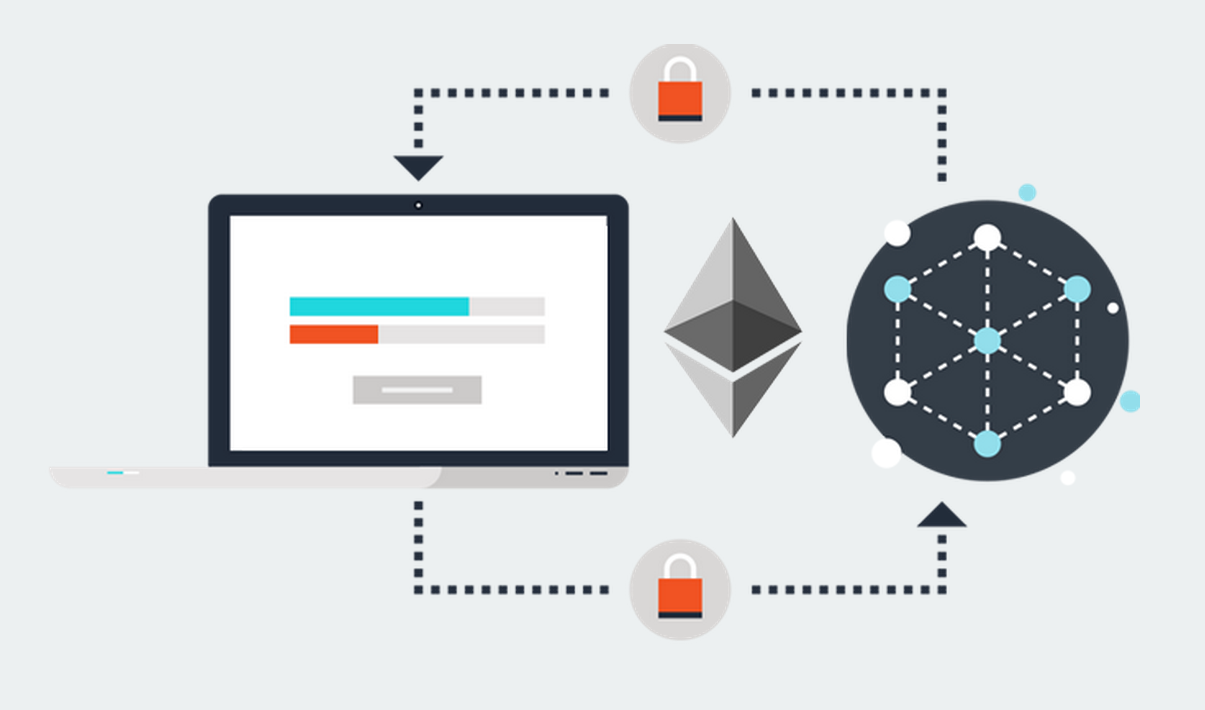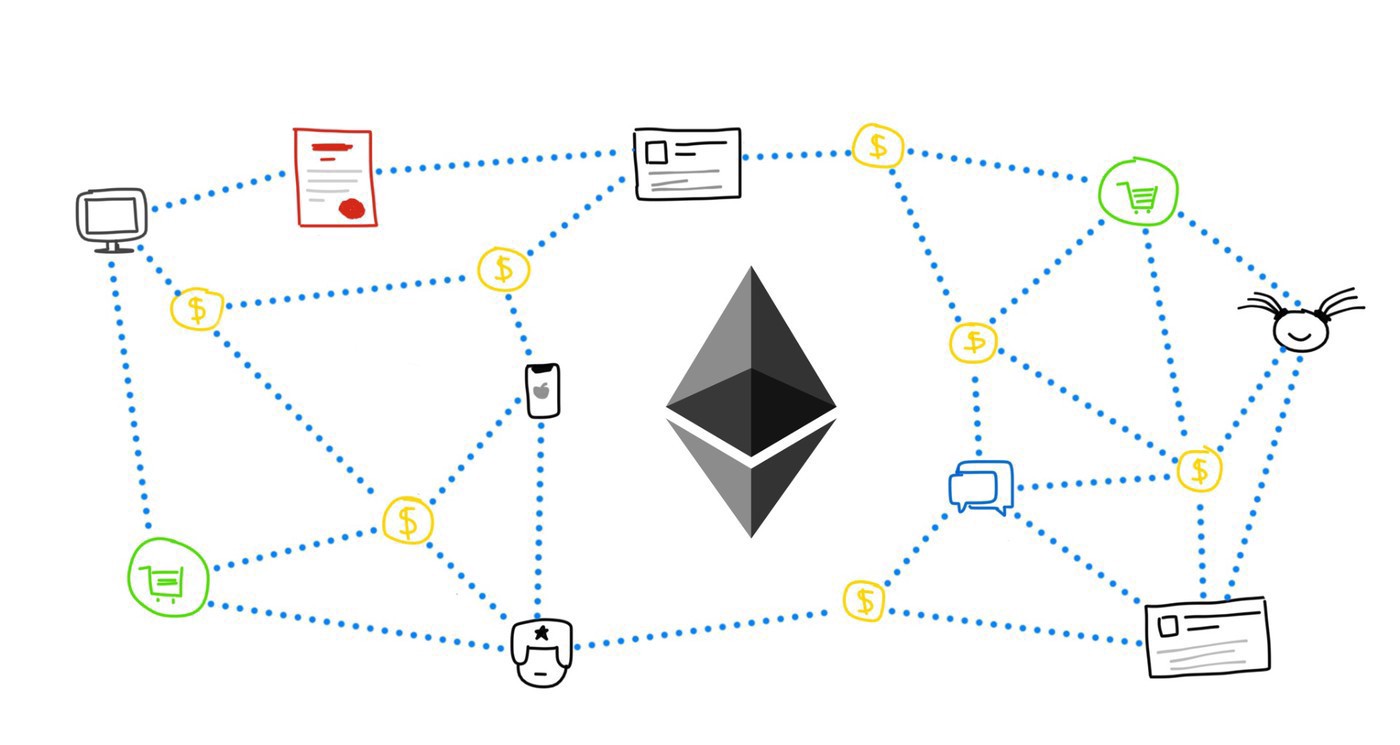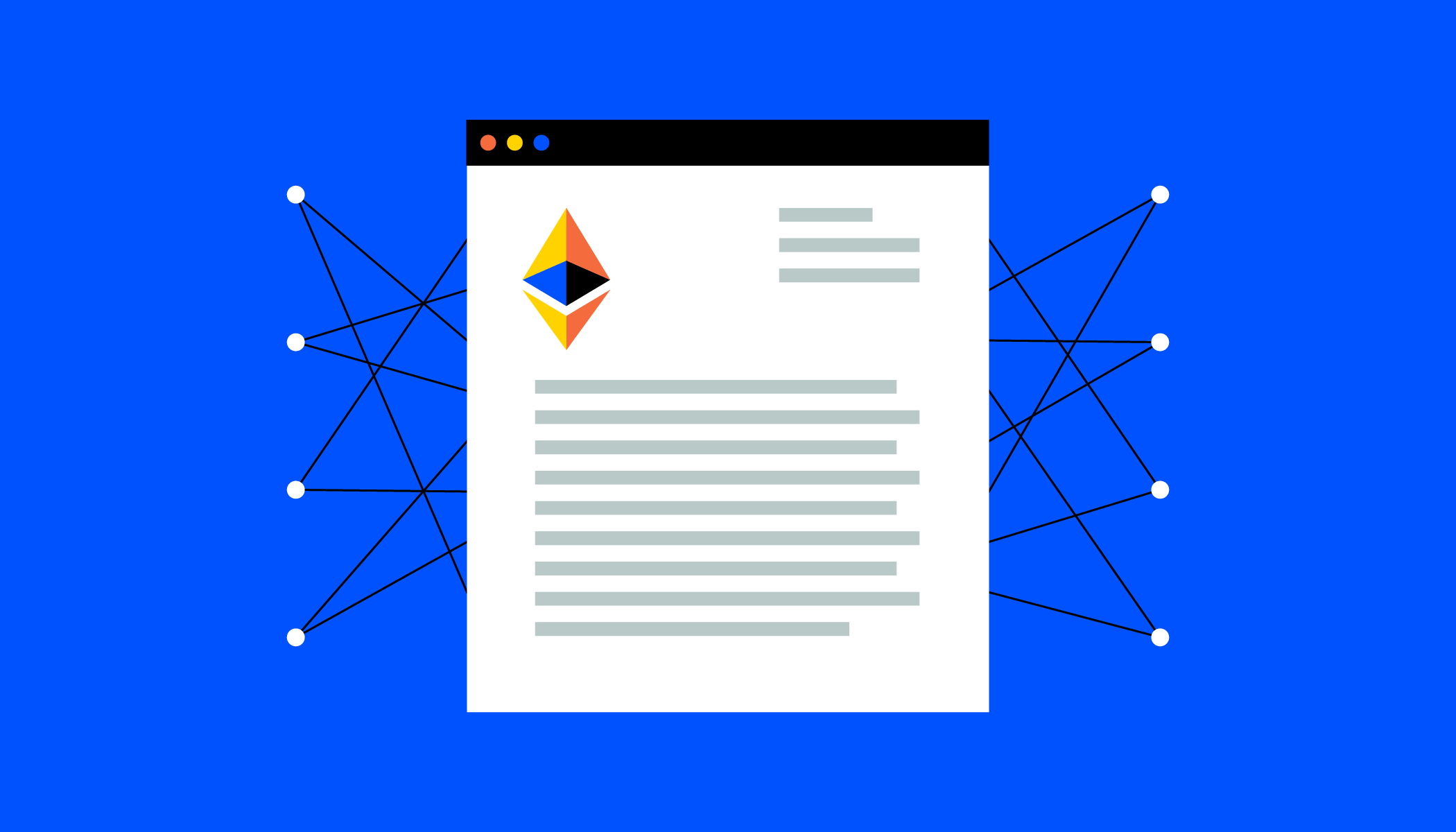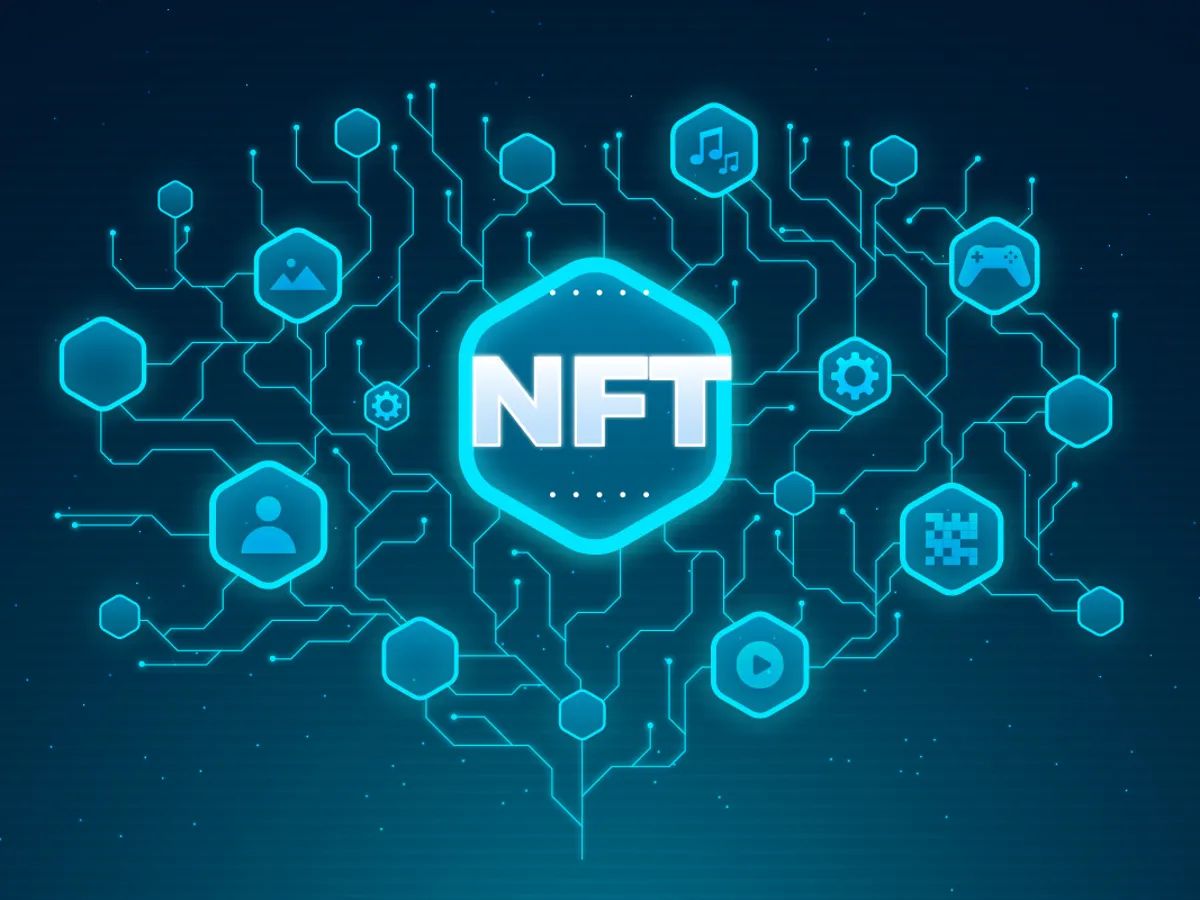Introduction
Welcome to the world of smart contracts! In this digital era, where technology continues to pave the way for innovative solutions, smart contracts have emerged as a game-changer in various industries. Whether you are a business owner, developer, or simply curious about the potential of blockchain technology, learning how to write smart contracts is a valuable skill.
Smart contracts are self-executing contracts with predefined conditions and terms stored on a blockchain. They eliminate the need for intermediaries, ensuring transparency, security, and efficiency in carrying out transactions. The decentralized nature of smart contracts makes them resistant to manipulation and fraud, offering a level of trustworthiness previously unattainable.
By understanding the fundamentals of smart contract writing, you can unlock a world of possibilities. Not only can you create your own applications, but you can also contribute to the growth and advancement of blockchain technology as a whole.
In this article, we will explore the basics of smart contract writing, including the benefits they offer, the programming languages involved, the steps to create a smart contract, common mistakes to avoid, and best practices to follow. This comprehensive guide will equip you with the knowledge and skills necessary to start your smart contract writing journey.
While writing smart contracts may seem daunting at first, rest assured that it is an attainable skill with the right resources and guidance. With a little practice, you can become proficient in writing smart contracts that are reliable, secure, and meet the specific requirements of various use cases.
So, if you’re ready to dive into the world of smart contract writing, let’s get started on this exciting journey!
What is a Smart Contract?
A smart contract is a self-executing digital contract that is stored and executed on a blockchain. It is essentially a computer program that defines the terms and conditions of an agreement between two or more parties. These contracts automatically execute the agreed-upon actions when the specified conditions are met, without the need for intermediaries or third parties.
Unlike traditional contracts that are typically written in natural language and enforced by legal systems, smart contracts are written in programming languages and enforced by the blockchain’s decentralized network. This removes the subjectivity and potential for human error in interpreting and enforcing traditional contracts.
Smart contracts offer several key benefits over traditional contracts:
- Transparency: Smart contracts are stored on a public blockchain, making them accessible to all involved parties. This transparency ensures that everyone has a clear understanding of the terms and conditions.
- Security: Smart contracts are encrypted and stored on a decentralized blockchain network, making them highly secure and resistant to tampering or unauthorized changes.
- Efficiency: Smart contracts automate the execution of contract terms, eliminating the need for manual processes and reducing the time and costs associated with implementing and enforcing contracts.
- Trustworthiness: Smart contracts operate based on predefined conditions and rules, ensuring that they are executed exactly as intended without any room for manipulation or disputes.
Smart contracts have a wide range of applications across industries. They can be used to facilitate and automate various types of transactions, such as financial agreements, supply chain management, property transfers, intellectual property rights, and more. The use of blockchain technology in smart contracts also opens up opportunities for decentralized applications (DApps) and tokenization.
Overall, smart contracts provide a secure, transparent, efficient, and trustless way to execute and enforce agreements. By leveraging the power of blockchain technology, they have the potential to revolutionize the way business transactions and legal agreements are conducted.
Benefits of Writing Smart Contracts
Writing smart contracts provides numerous advantages compared to traditional contract methods. These benefits extend to various aspects of business transactions and legal agreements. Let’s explore some of the key advantages:
- Automation and Efficiency: Smart contracts automate the execution of contract terms, eliminating the need for manual intervention and time-consuming processes. This automation significantly reduces administrative tasks, streamlines workflows, and accelerates transaction settlements.
- Transparency: Smart contracts are stored on a public blockchain, making them transparent and accessible to all involved parties. This transparency mitigates the risk of fraud or manipulation, as all transaction details are recorded on an immutable ledger visible to all participants.
- Reduced Costs: By removing intermediaries and automating processes, smart contracts eliminate the need for costly third-party services. This cost reduction can be particularly impactful in industries with complex supply chains, financial transactions, or legal agreements.
- Increased Security: Smart contracts leverage cryptographic algorithms and blockchain technology to ensure that transactions are secure and tamper-proof. The decentralized nature of blockchain adds an extra layer of security, as it is resistant to attacks and single points of failure.
- Accuracy and Consistency: Smart contracts execute based on predefined rules and conditions, minimizing the risk of errors associated with manual contract enforcement. This accuracy and consistency provide greater confidence in the outcome of contract transactions.
- Efficient Dispute Resolution: In the case of disputes, smart contracts can include predefined resolution mechanisms, such as arbitration or consensus mechanisms. This can expedite the resolution process and reduce the need for costly litigation.
- Immutable Record-Keeping: Smart contracts on a blockchain provide a permanent and unchangeable record of transaction history. This immutable record-keeping feature enhances accountability and auditability, strengthening the trust between parties involved.
These benefits of writing smart contracts apply to a wide range of industries, including finance, supply chain, real estate, healthcare, and more. By leveraging the capabilities of smart contracts, businesses can streamline processes, enhance security, reduce costs, and improve overall efficiency.
As with any technology, it is essential to understand the limitations and potential risks associated with smart contracts. However, when utilized appropriately, the benefits far outweigh the challenges, paving the way for a future where digital agreements are executed seamlessly and trust is inherent in every transaction.
How Do Smart Contracts Work?
To understand how smart contracts work, it’s crucial to grasp the underlying technology powering them: blockchain. Smart contracts are executed and enforced on a blockchain, which is a decentralized and distributed ledger that records and validates transactions.
When a smart contract is created, it is written in a programming language such as Solidity for Ethereum or Chaincode for Hyperledger Fabric. The contract contains the terms, conditions, and actions to be executed when specific criteria are met. These criteria are often referred to as the contract’s “if-then” conditions.
When a user interacts with a smart contract, a transaction is broadcasted to the blockchain network. The network’s nodes validate the transaction, verify the contract’s code, and execute the predefined actions if the conditions are met. The contract’s code then updates the blockchain, reflecting the changes and recording the execution of the contract.
One of the key features of smart contracts is their self-executing nature. Once deployed on the blockchain, they operate autonomously without human intervention, relying on the distributed network to validate and execute transactions. This eliminates the need for intermediaries or centralized authorities, enhancing transparency and efficiency.
Smart contracts are triggered by specific events or conditions, such as a date/time occurrence, a specific input value, or the receipt of tokens. For example, a smart contract for an insurance policy can automatically initiate a claim payout if the triggering event, such as a flight cancellation, is recorded on the blockchain.
The decentralized nature of blockchain technology ensures the security and integrity of smart contracts. As each transaction is recorded and verified by multiple nodes in the network, it becomes incredibly difficult for malicious actors to tamper with the contract’s execution or manipulate the outcome.
It’s important to note that smart contracts are not infallible and can have vulnerabilities or coding errors. Therefore, rigorous testing and auditing of the contract’s code are essential to mitigate risks and ensure its reliability.
Overall, smart contracts leverage the capabilities of blockchain technology to provide a decentralized, transparent, and self-executing solution for executing and enforcing digital agreements. By removing the need for intermediaries and automating contract execution, smart contracts streamline transactions, enhance security, and bring greater trust to the digital economy.
The Programming Language of Smart Contracts
The programming language used to write smart contracts depends on the blockchain platform being utilized. Different blockchain platforms support different programming languages, each with its own syntax, features, and characteristics. Let’s explore some of the common programming languages used for writing smart contracts:
Solidity: Solidity is the most widely used programming language for writing smart contracts on the Ethereum blockchain. It is a statically typed language that resembles JavaScript and is specifically designed for Ethereum’s Virtual Machine (EVM). Solidity allows developers to define the contract’s state variables, functions, and event triggers, and it supports features like inheritance and libraries.
Vyper: Vyper is another programming language for Ethereum smart contracts. It is designed to prioritize security and simplicity over flexibility. Vyper enforces strict coding rules to minimize the risk of vulnerabilities and make contract code easier to audit. Although less widely adopted than Solidity, Vyper offers an alternative for developers who prioritize security.
Chaincode: Chaincode is the programming language used for writing smart contracts on the Hyperledger Fabric blockchain framework. It supports multiple programming languages, including Go, JavaScript, and Java. Chaincode defines the contract’s business logic and execution flow, enabling developers to implement complex business rules and access control mechanisms.
Ligo: Ligo is a high-level programming language for writing smart contracts on the Tezos blockchain. It provides a user-friendly syntax and supports multiple programming paradigms, including functional and imperative programming. Ligo aims to make contract development more accessible to all developers, regardless of their programming background.
Serum: Serum is a programming language specifically designed for writing smart contracts on the Solana blockchain. It follows a Rust-based syntax and aims to provide a secure and efficient environment for developing decentralized applications (DApps) on Solana’s high-performance blockchain network.
These are just a few examples of the programming languages used in smart contract development. Other blockchain platforms, such as EOS, Cardano, and NEO, have their own programming languages tailored to their specific ecosystems.
When choosing a programming language for smart contract development, developers must consider factors like platform compatibility, community support, security features, and the specific requirements of the use case. It’s important to be proficient in the chosen language and to follow best practices to ensure the reliability and security of the smart contracts.
As blockchain technology continues to evolve, new programming languages and frameworks may emerge, offering improved functionalities and development experiences for writing smart contracts. Staying updated with the latest trends and innovations in smart contract programming languages can help developers maintain their competitive edge in this rapidly evolving field.
Steps to Write a Smart Contract
Writing a smart contract involves several steps that ensure the contract’s functionality, security, and effectiveness. Let’s explore the general process of writing a smart contract:
- Define the Use Case: Begin by clearly defining the use case for your smart contract. Understand the problem you are trying to solve and identify the specific requirements and functionalities that the contract needs to fulfill.
- Choose the Blockchain Platform: Select the blockchain platform that best aligns with your use case and programming language preferences. Consider factors such as scalability, security, community support, and the platform’s ability to execute smart contracts.
- Design the Contract Structure: Design the structure of your smart contract, specifying the contract’s state variables, functions, and event triggers. Determine the contract’s input parameters and return values, and define any required data structures or libraries.
- Write the Contract Code: Using the selected programming language for your blockchain platform, write the code that defines the contract’s behavior and logic. Implement the required functions and actions, considering factors such as data validation, access controls, and algorithmic calculations.
- Handle Error Conditions: Anticipate potential error conditions and edge cases that may arise during the execution of the contract. Implement error handling mechanisms to gracefully handle exceptions, provide meaningful error messages, and prevent unintended behavior.
- Test and Debug: Thoroughly test the smart contract in different scenarios to ensure its correctness and reliability. Identify and fix any bugs, logical errors, or vulnerabilities that may compromise the contract’s functionality or security.
- Ensure Security and Compliance: Review the contract’s code for potential security vulnerabilities. Follow best practices for secure coding, such as input validation, protection against reentrancy attacks, and secure storage of sensitive data. Consider regulatory compliance requirements if applicable.
- Document and Deploy: Document the contract’s specifications and functionalities for future reference. Compile the contract code into bytecode and deploy it onto the chosen blockchain platform. Verify the contract’s deployment and obtain its address on the blockchain.
- Interact with the Contract: Once deployed, interact with the smart contract to test its functionality and ensure that it behaves as expected. Use the contract’s public functions and events to trigger actions and retrieve information from the blockchain.
- Maintain and Upgrade: Monitor the performance and usage of the smart contract and address any issues or user feedback promptly. Consider future updates or upgrades to the contract’s code to enhance its functionality or address evolving requirements.
Writing a smart contract is an iterative process. It requires attention to detail, knowledge of the chosen programming language, and an understanding of the blockchain platform’s capabilities. By following these steps, developers can create robust and reliable smart contracts that meet the specific requirements of their use cases.
Common Mistakes to Avoid in Smart Contract Writing
While writing smart contracts, it’s important to be mindful of potential pitfalls and common mistakes that can compromise the functionality, security, and effectiveness of the contract. Here are some common mistakes to avoid:
- Insufficient Testing: Failing to thoroughly test the smart contract can leave it vulnerable to bugs or logical errors. Comprehensive testing in various scenarios is crucial to identify and rectify any issues before deployment.
- Lack of Input Validation: Neglecting to validate inputs can lead to unexpected behavior or vulnerabilities. Proper input validation ensures that only valid and expected data is accepted, reducing the risk of exploitation.
- Ignoring Gas Costs: The computational cost of executing smart contracts, known as gas, should be considered. Ignoring gas costs can result in unforeseen expenses or contract failures due to exceeding gas limits.
- Overlooking Security Vulnerabilities: Failing to address security vulnerabilities can expose the smart contract to potential attacks or hacks. Regular audits and adherence to secure coding practices are essential to mitigate risks.
- Inadequate Access Controls: Inadequate access controls can result in unauthorized actions or tampering with contract data. Implementing strict access controls ensures that only authorized parties can interact with the contract.
- Incorrect Assumptions: Making assumptions about the behavior of the blockchain or external dependencies can lead to unexpected results. It’s important to thoroughly understand the platform’s limitations and consider any external factors that may impact the contract’s execution.
- Using Unverified External Code: Incorporating external code without proper verification can introduce vulnerabilities or dependencies on untrusted sources. It’s crucial to carefully vet and validate any external code used in the smart contract.
- Not Considering Upgradability: Overlooking the need for contract upgradability can limit the contract’s flexibility and ability to adapt to future requirements. Building in upgradability mechanisms allows for seamless upgrades without disrupting existing contract functionality.
- Not Documenting the Contract: Failing to document the smart contract’s specifications, functionalities, and architectural decisions can hinder future maintenance and understanding. Comprehensive documentation ensures that the contract remains comprehensible and maintainable over time.
- Disregarding Regulatory Compliance: Smart contracts operating within regulated industries must comply with relevant laws and regulations. Ignoring regulatory requirements can lead to legal consequences and reputational damage.
Avoiding these common mistakes sets the foundation for well-designed, secure, and reliable smart contracts. By staying informed, following best practices, and continually learning from the experiences of others, developers can minimize risks and create smart contracts that are robust and effective.
Debugging and Testing Smart Contracts
Debugging and testing are critical steps in the smart contract development process. Thorough testing helps identify and fix bugs, ensures the contract functions as intended, and enhances its overall reliability. Here are some key aspects to consider when debugging and testing smart contracts:
Unit Testing: Unit testing involves testing individual functions and components of the smart contract to ensure they produce the expected output for a given input. This helps identify any logic errors or inconsistencies within the contract’s code.
Functional Testing: Functional testing involves simulating real-world scenarios and interactions with the smart contract to verify its behavior. This helps ensure that the contract handles different use cases and edge cases correctly, and that it produces the desired outcomes.
Edge Case Testing: It is important to test the smart contract with extreme or edge case scenarios to ensure that it performs as expected in unusual or unexpected circumstances. This helps uncover any vulnerabilities or unexpected behavior that may not be apparent during regular functional testing.
Gas Limit Testing: Testing a smart contract’s gas usage is crucial to ensure that it stays within the specified gas limits of the blockchain platform. Gas limit testing helps identify any gas-intensive operations that may cause the contract to fail due to exceeding the available gas.
Interoperability Testing: If the smart contract interacts with other contracts or external systems, it is important to test these interactions thoroughly. This includes testing contract-to-contract communication, receiving and sending tokens, and ensuring compatibility with external systems such as oracles or other blockchain services.
Security Audits: Conducting security audits is vital to identify and address any potential vulnerabilities or exploits in the smart contract’s code. Third-party security auditors can provide valuable insights and recommendations to improve the contract’s security.
Testnet Deployment: Deploying the smart contract on a testnet allows for real-world testing in a controlled environment before deploying it on the mainnet. This helps identify any unforeseen issues or bugs that may arise from differences in network conditions or configurations.
Code Review and Peer Review: Engaging in code reviews and peer reviews by experienced developers can provide valuable feedback, suggestions, and catch potential issues that may have been overlooked. This collaborative process helps improve the overall quality and reliability of the smart contract.
Continuous Testing: Testing should be an ongoing process throughout the smart contract’s lifecycle. Continuously testing and monitoring the contract, even after deployment, helps identify and address any issues or vulnerabilities that may arise due to changes in the blockchain platform or external dependencies.
Thorough debugging and testing processes are essential to ensure the reliability, security, and effectiveness of smart contracts. By following these practices, developers can enhance the quality of their smart contracts, mitigate risks, and build trust in the decentralized applications powered by these contracts.
Deploying and Interacting with Smart Contracts
Once a smart contract has been developed and tested, it is ready to be deployed onto the blockchain network. Deploying a smart contract involves deploying its bytecode and creating a contract instance that can be interacted with by users and other contracts. Here’s an overview of the process of deploying and interacting with smart contracts:
Choosing the Deployment Network: Select the blockchain network on which you want to deploy your smart contract. This could be a public blockchain network, such as Ethereum or Binance Smart Chain, or a private or consortium blockchain network.
Compiling the Contract: Compile the smart contract code into bytecode using the appropriate compiler for the chosen blockchain platform. The bytecode represents the executable version of the contract and is required for deployment.
Calculating Deployment Costs: Before deploying the contract, consider the gas fees or deployment costs associated with the blockchain network. Calculate the estimated deployment costs to ensure you have sufficient funds to cover the transaction fees.
Deploying the Contract: Use a blockchain-specific tool or interface, such as Ethereum’s Remix or Truffle, to initiate the deployment process. The tool will prompt you to provide the bytecode and any constructor arguments required for the contract’s initialization. Once deployed, the contract will receive a unique address on the blockchain.
Interacting with the Contract: To interact with a deployed smart contract, users or other contracts can utilize the contract’s address and its public functions. Public functions can be called using the contract’s address, and the necessary parameters can be provided to execute specific actions defined in the contract’s code.
Reading Contract Data: Smart contracts often have state variables that store data. By calling public getter functions, users can read the values of these variables from the contract. This allows for transparent access to the contract’s data stored on the blockchain.
Writing to the Contract: Smart contracts can also have public functions that modify the contract’s state. By calling these functions with the appropriate parameters, users can execute predefined actions specified in the contract, such as transferring tokens, updating data, or triggering specific events.
Events and Event Logs: Smart contracts can emit events to notify external applications or contracts about specific occurrences or changes. Users can subscribe to these events and receive event logs that capture relevant contract data or status updates.
Updating Deployed Contracts: In some cases, it may be necessary to update a deployed smart contract. However, it’s important to note that most blockchain platforms do not allow direct modifications of deployed contracts. Instead, developers can create a new version of the contract and use mechanisms such as contract migration or delegation to handle interaction with the updated contract instance.
Deploying and interacting with smart contracts allows users to leverage the functionalities provided by the contracts and participate in decentralized applications powered by blockchain technology. It enables transparent, secure, and reliable execution of digital agreements without the need for intermediaries or central authorities.
Best Practices for Writing Smart Contracts
When writing smart contracts, following best practices ensures that the contracts are secure, efficient, and maintainable. Here are some key best practices to consider:
- Security First: Security should be a top priority when writing smart contracts. Follow secure coding practices, such as input validation, error handling, and protection against known vulnerabilities like reentrancy attacks or integer overflow/underflow.
- Keep Contracts Simple: Strive for simplicity and clarity in contract design and implementation. Avoid unnecessary complexity or convoluted logic that may introduce vulnerabilities or make the contract difficult to understand and maintain.
- Modularize and Reuse Code: Modularize contract functionality into separate functions and contracts, promoting code reuse and making it easier to maintain and upgrade contracts. This also helps reduce the attack surface and ensures that multiple parts of the contract can be tested independently.
- Follow Naming Conventions: Use meaningful and consistent naming conventions for variables, functions, events, and contract structures. This enhances readability and makes the contract code easier to understand for developers and auditors.
- Document Thoroughly: Provide comprehensive documentation for the smart contract, including functional descriptions, data structures, input-output details, and any assumptions or constraints. Good documentation helps other developers understand and interact with the contract.
- Code Review and Auditing: Conduct code reviews and professional audits of the contract code by experienced developers and security experts. Fresh eyes can identify potential vulnerabilities, coding errors, or areas for improvement that may have been overlooked.
- Version Control: Use version control systems like Git to track and manage changes to the contract code. This helps maintain a history of the contract’s development, enables collaboration with other developers, and provides a fallback in case of code regressions or unintended changes.
- Test Thoroughly: Implement comprehensive testing strategies, including unit tests, functional tests, and edge case tests. Use test networks or local development environments to simulate real-world scenarios and validate the contract’s behavior in different conditions.
- Regularly Update Dependencies: Keep track of and update any external dependencies used in the smart contract code. This helps address security vulnerabilities and take advantage of new features or optimizations provided by the updated dependencies.
- Consider Gas Efficiency: Optimize contract code for gas efficiency to minimize transaction costs and improve contract execution speed. Avoid gas-intensive operations and design contract functions and logic with gas optimization in mind.
Following these best practices helps ensure the quality, reliability, and security of smart contracts. It reduces the risk of vulnerabilities, enhances code maintainability, and contributes to the overall success of blockchain-based applications. As smart contract development is still an evolving field, staying informed about emerging best practices and industry standards is essential to continuously improve contract quality.
Conclusion
Writing smart contracts is a crucial skill in today’s blockchain-powered digital landscape. Smart contracts offer transparency, security, efficiency, and trustworthiness in executing and enforcing agreements. By following best practices, developers can create robust and reliable smart contracts that meet the specific requirements of various industries and use cases.
In this article, we explored the fundamentals of smart contract writing, including what smart contracts are, their benefits, and the programming languages commonly used. We also discussed the steps involved in writing smart contracts, common mistakes to avoid, and the importance of debugging and testing. Additionally, we delved into the process of deploying and interacting with smart contracts.
When writing smart contracts, it’s imperative to prioritize security, keep contracts simple, and follow best practices such as modularization, code reuse, and diligent documentation. Additionally, conducting code reviews, thorough testing, and staying updated on the latest developments in smart contract technology are crucial for producing reliable and secure contracts.
As the blockchain ecosystem continues to evolve, the demand for smart contract developers is likely to grow. By acquiring the skills and knowledge needed to write smart contracts, you can position yourself at the forefront of this transformative technology.
Remember, smart contract writing is an ongoing learning process. It requires continuous improvement, adaptation to emerging best practices, and the ability to address the evolving needs of the decentralized applications ecosystem. With dedication and a commitment to quality, smart contract developers have the potential to shape the future of digital agreements and contribute to the advancement of blockchain technology as a whole.

























